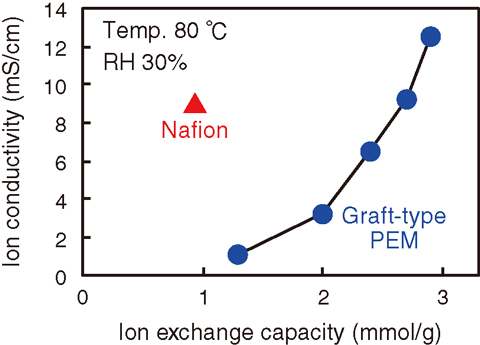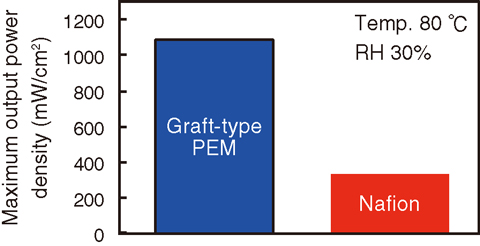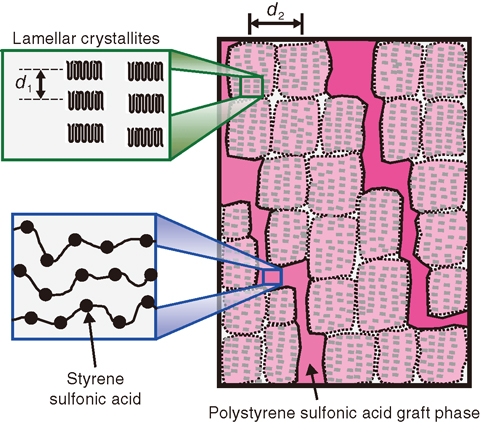
Fig.5-17 Ion conductivity of graft-type PEMs

Fig.5-18 Performance of fuel cells using graft-type PEMs

Fig.5-19 Hierarchical structure of the graft-type PEM
Polymer electrolyte fuel cells (PEFCs) are expected to be the next generation of power sources for vehicles. The vital component of PEFC is the proton-conductive polymer electrolyte membranes (PEMs). In recent years, PEMs with high proton conductivity under high temperature and low relative humidity (RH) conditions have been required. Our group has developed PEMs using a radiation-induced grafting method. The main advantage of this method is to control the ion exchange capacity (IEC) of the PEMs by changing the grafting condition.
The PEMs were prepared by the radiation-induced grafting of styrene into ethylene-co-tetrafluoroethylene (ETFE) films and subsequent sulfonation. At 80 ℃ under 30%RH, the proton conductivity of the graft-type PEMs increased with IEC and reached a maximum value of 13 mS/cm (Fig.5-17). This is far higher than the conductivity of Nafion® 212, which is currently the most representative PEM for PEFC.
The PEFC was fabricated using the graft-type PEM with an IEC of 2.4 mmol/g. Even at 80 ℃ under 30%RH, the maximum output power density was 1085 mW/cm2, which was three times higher than the case of Nafion (Fig.5-18).
To examine the origin of this high PEFC performance, the hierarchical structure of the graft-type PEMs was investigated by a small-angle X-ray-scattering (SAXS) method. The obtained SAXS profile showed two characteristic peaks at correlation distances of d1 = 19-29 nm and d2 = 225-300 nm. The former and latter peaks probably correspond to the lamellar spacing in the ETFE crystals and the spacing between the crystallites, respectively (Fig.5-19). The d2 value increased with IEC but decreased in the IEC range above 2.4 mmol/g. This result could have been caused by the phase separation phenomenon in the PEM. As shown in Fig.5-19, in high-IEC PEMs, the polystyrene sulfonic acid (PSSA) graft phases were likely formed in the interstitial regions between the crystallites. By phase separation from the PSSA grafts, the crystallites would gather with each other, leading to the reduction of d2. The graft phases between the crystallites functioned as an ion channel, enhancing the proton conductivity even under high temperature and low RH conditions.